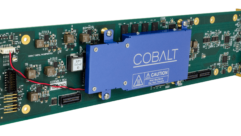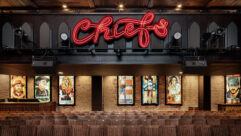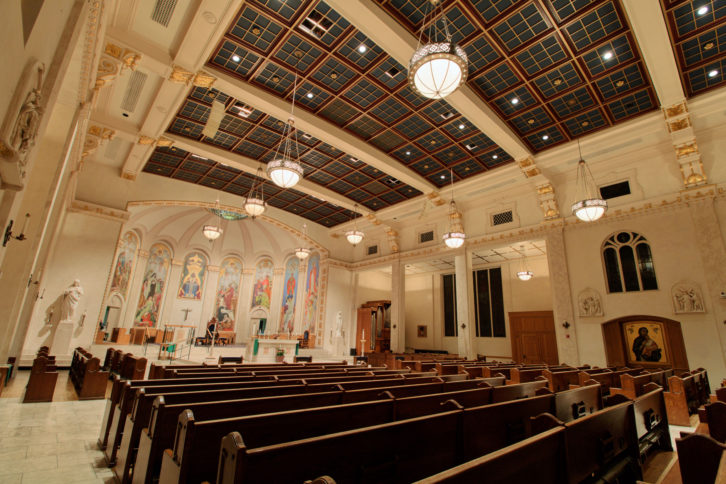
For years, the huge St. Mary’s Cathedral in Portland, OR had endured sound systems that were not up to the job. Church leaders called in Alpha Sound for a complete renovation with Yamaha and NEXO speakers, DPA microphones, and Shure wireless systems. Balancing acoustics and aesthetics in such a vast architectural place required a master’s touch and a lot of hard work for Alpha Sound. Devin Sheets of Salem, OR-based Alpha Sound has the details.
SVC: It’s been a little over two years since we last talked and a lot has been happening, so give us the picture of what’s been going on at Alpha Sound.
Devin Sheets: Alpha Sound is doing well. Business is great. We’re very lucky to have had a good run even through Covid. We’ve been doing a lot of installation work, obviously, since the concert side of things cooled down quite a bit. So the installation side has been great for our company and doing better than ever.
You had a huge local project at St. Mary’s Cathedral. It’s a massive, and I’m sure challenging, space. It looks like a fairly traditional setup for services but they also hold a wide range of different events in there every week.
Yes. It’s a Catholic Church and so they have Mass, they have some special events, and they have weddings, funerals, and other functions. They’re also keeping an open mind to other creative uses of the space. We wanted to provide them with a system that works for what they do now, but also has expandability and can be very future-proof. If they’re still getting creative ten or even twenty years from now, how can we design a system that is going to still be relevant and useful at that time?
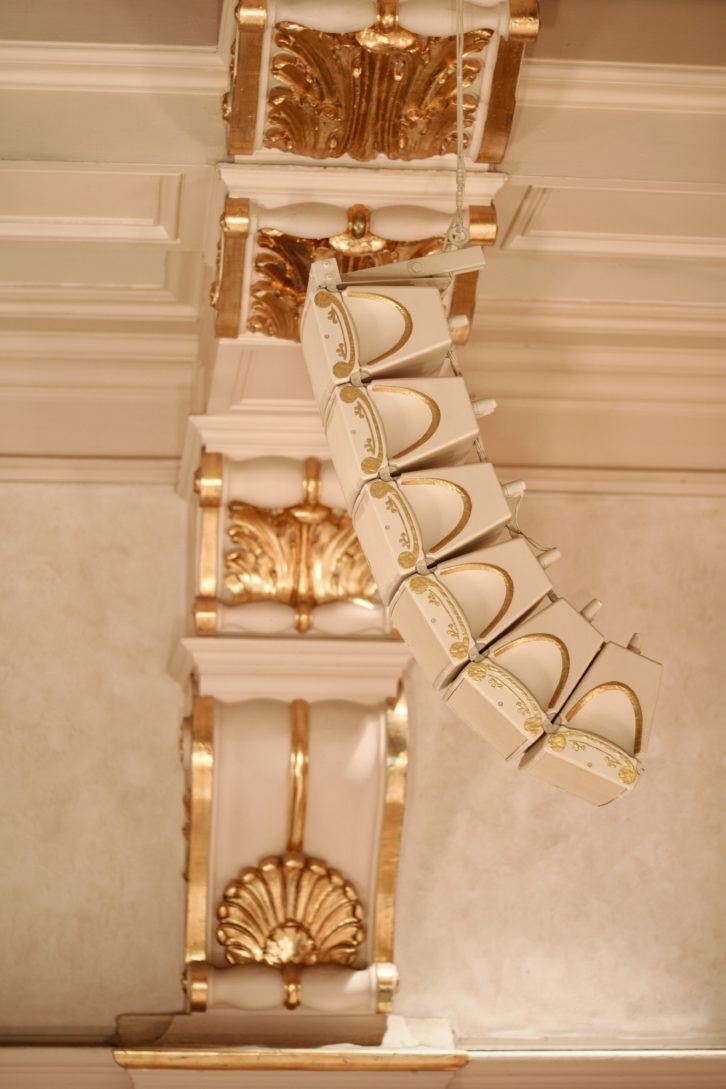 That is quite the task nowadays with the technology moving as fast as it is, but there are some things that are timeless issues. For example, when you hear about a cathedral you think reverberation. So what brought about their decision to make this tremendous investment in sound improvement?
That is quite the task nowadays with the technology moving as fast as it is, but there are some things that are timeless issues. For example, when you hear about a cathedral you think reverberation. So what brought about their decision to make this tremendous investment in sound improvement?
Yes, reverberation is a significant issue with the space. The space is stunning visually, and the sound is, of course, things like classical music or liturgical-style worship. It’s very, very beautiful, but it does present the problem of intelligibility. One of the main longterm complaints in that space is how hard it is just talk to somebody who is 10 feet away from you. When you have people speaking to the congregation, or you have music, it’s just very difficult. The sound systems they’ve had in the past were not adequate on a number of fronts. They were older analog technology and they were also stuffed away so that you couldn’t physically see any speakers anywhere. There was this desire to keep them isolated from view, which causes acoustic problems because you have to put them up inside ceiling cavities; they don’t cover the space very well and the locations are limited. With the older analog technology, you don’t have the processing and the ability to craft the sound.
Do they have full-time tech people or did this need to be more of a turnkey system?
Well, that’s another challenge, they don’t have a regular sound person. An evangelical church might have a sound tech, a sound crew, a video crew, lighting crew–people that are responsible for making all the little tweaks and changes that you need to keep a complicated system running over time, and adapting to the environment and the use case. They don’t have that at this facility. They need to be able to walk in and use the equipment for the limited range of applications. They want to push a button to either turn it on or off; they want to have a few basic functionality features and that’s it. So there’s a wall panel and we introduced an iPad into the equation with the Yamaha ProVisionaire touch app. It’s a customizable app that just has four buttons. That’s it. It has the things you need to have a great experience and it handles a lot of stuff in the background that normally a sound tech would do. All the little tiny issues with microphones or cables or the sound of things or the levels. All that stuff has to be in the background for the client. It is actually really complicated to get that to work right.
Yes it’s very complex on the setup to enable it to be that simple to use. They’re a little less intimidated by an iPad or wall panel than a 32-channel front of house mixing console.
 Absolutely. And, yes, there’s also the visual factor of it. They don’t want to have a big piece of gear out in the middle with a person there. Also yes, they want to have two or three things to worry about. They want to push a button and have things happen. That was really difficult. We’ve done this on a number of smaller jobs, but this was the first really large-scale and quite complex facility that we took this approach. You can handle it from a logistical standpoint pretty easily–just things turning on or off or a little bit of self-mixing, that’s one thing. But it’s the sensibility from a sonic standpoint. That’s what’s really hard; to make sure that things consistently sound good. Not just technically function, but also how do things remain sounding good? For example, someone decides to put a lavalier mic on themselves–the way they position the mic or the sound of their voice is different than when they walk up to the podium microphone and speak into it. How do you ensure consistency of the sound from mic to mic, or the different configurations that the choir may arrange themselves in underneath the hanging microphones? There are so many variables, these tiny decisions that a sound engineer would do on the fly on a mixer in real time. You have to design processing that can make those decisions well enough and do it in the background with very, very minimal human involvement.
Absolutely. And, yes, there’s also the visual factor of it. They don’t want to have a big piece of gear out in the middle with a person there. Also yes, they want to have two or three things to worry about. They want to push a button and have things happen. That was really difficult. We’ve done this on a number of smaller jobs, but this was the first really large-scale and quite complex facility that we took this approach. You can handle it from a logistical standpoint pretty easily–just things turning on or off or a little bit of self-mixing, that’s one thing. But it’s the sensibility from a sonic standpoint. That’s what’s really hard; to make sure that things consistently sound good. Not just technically function, but also how do things remain sounding good? For example, someone decides to put a lavalier mic on themselves–the way they position the mic or the sound of their voice is different than when they walk up to the podium microphone and speak into it. How do you ensure consistency of the sound from mic to mic, or the different configurations that the choir may arrange themselves in underneath the hanging microphones? There are so many variables, these tiny decisions that a sound engineer would do on the fly on a mixer in real time. You have to design processing that can make those decisions well enough and do it in the background with very, very minimal human involvement.
I would think that one challenge comes when they walk around using the lav and then when they step up to the podium, a machine or a human has to decide whether the lav or the podium mic gets used and not both at the same time.
Yes. That is an issue with them wearing the lavalier mics, walking up to the podium microphone. We looked at a processing-based solution for that, but actually there was a much simpler workaround: we just gave them a big on/off switch that they can put in their pocket. They just know to push the button when they walk up to the podium microphone. That has worked out quite well.
You used DPA mics, a lot of different models. Why were they especially good for this situation?
Well, Alpha Sound has always been known for selecting brands based almost solely on their sonic quality as we judge it. We made the transition to NEXO based solely on demos we heard. We’ve been loyal to Yamaha because we just keep hearing the products and choosing them every time sonically. Similarly we heard demos of DPA microphones through the years. It’s like once you’ve heard it you can’t unhear it. We’ve worked with a lot of different high-end brands through the years and the times we’ve worked with DPA have really, really stuck in our minds. We became a DPA dealer and now we spec them on jobs. It’s just been unbelievable, just the consistency of the product, the sound quality among their different types of microphones. So it’s been a really, really consistent decision for the company from a sonic standpoint. It’s a very good pairing with everything else that we do.
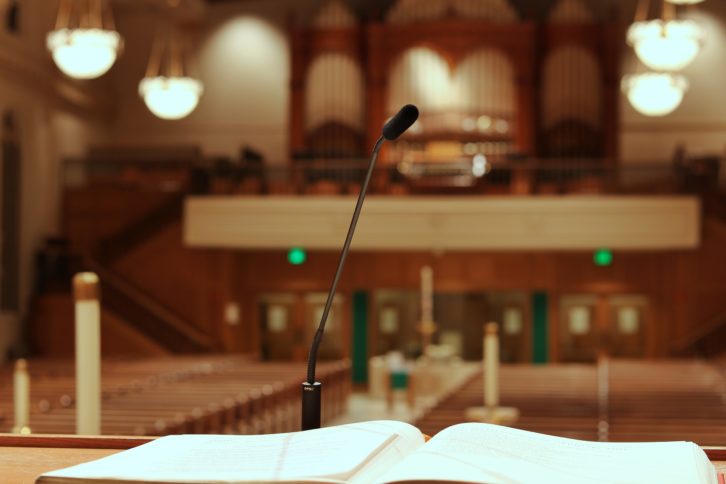 And to get the signal from the lavalier mics transmitted you went with the Shure wireless systems?
And to get the signal from the lavalier mics transmitted you went with the Shure wireless systems?
Yes. There are also Shure wireless products in the system, the ULX-D series on the Dante network, that’s hard to beat. They just do so well. The wireless spectrum, especially in a market like Portland, it’s very saturated and it’s very, very important to not have to worry about it.
The DPA 4006C ambient mics are in the center of the room. Those are just for the streaming mix?
They are for the live stream and they are also for recording applications. A lot of groups will come in and they just want to have a feed that can go into their documentation systems for concerts or events. A wedding photographer might want the feed from the microphones so we provide an output. Those microphones provide the ambient source in the mix.
That must be something of a challenge to keep them from sounding over reverberant.
That’s another argument to be made for using very, very high-end products even for something like the ambient microphones. There could be a critique here to ask if it’s really worth the money to spend on DPA 4006s just for the ambient microphones. In our opinion it is because the ambient microphones make or break the whole context. You can have great individual sources in a mix and in some cases if you just stick with that and you’re using a little artificial reverb and a modern pop music mix, and then you just want to just add a little ambience for some crowd noise, it’s probably not critical that they be super high quality. It’s whatever. But in this case, the ambient level, the ambient sense, is so much a part of people’s experience of the space. It constitutes such a great bulk of the mix and it has to sound as stellar as the room does and it has to really capture the nuances of the space. It’s a difficult acoustic space, but also a beautiful one. It was very important that we not scrimp on that aspect of it because everything else in the mix sort of just rests in that. So that was a decision that we made to go for a very, very high level, even though it’s only “ambience.”
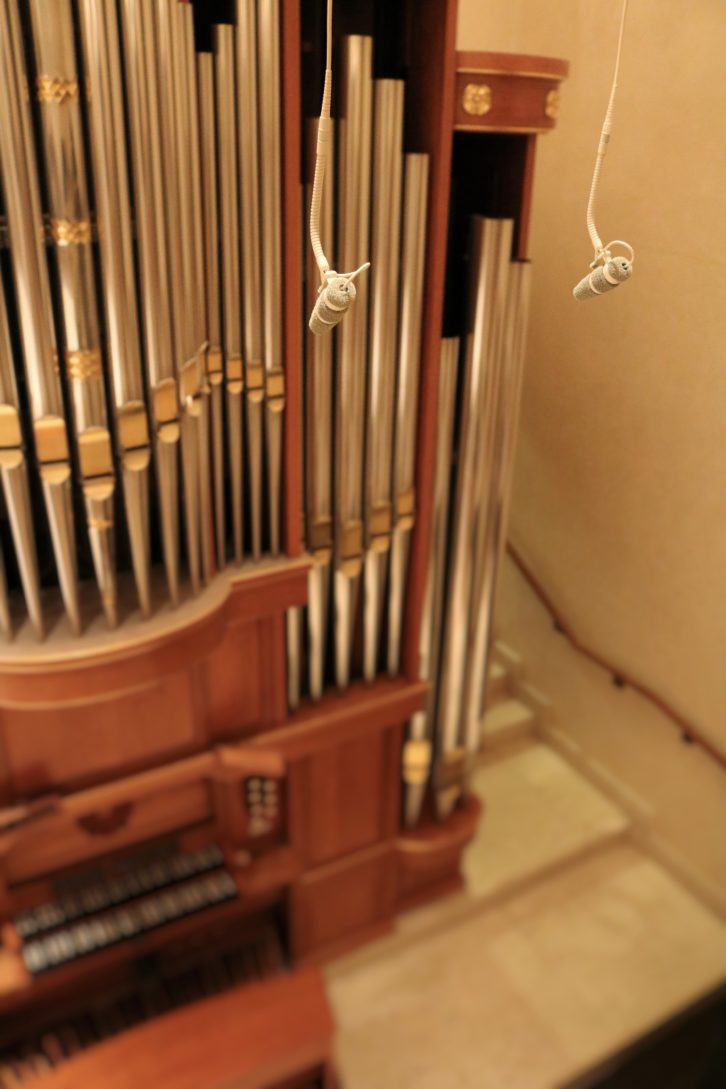 This wasn’t only a solid sound system on the technical side but you went to some serious measures on the aesthetics as well.
This wasn’t only a solid sound system on the technical side but you went to some serious measures on the aesthetics as well.
Yes. That’s kind of what this job is probably most known for at this point–putting the speakers out in the open air. We knew that was going to be problematic because the philosophy has been to not see equipment in a formal church like this. But we feel this is the best sonic decision given the line array technology and the physics, generally. That discussion was a bit difficult for them, but we came to a compromise. We suggested bringing a bit of artistry into the equation and paint the speakers to look like the surrounding architecture. It’s kind of a neo-classical Italian feel on the inside. The outside is a Roman-esque/Byzantine type of thing. We thought we could make these speakers look like they’re a part of the architecture of the building. We produced a number of possible designs to custom paint the speakers to be the exact color of the wall and put gold embellishments on them. We went through about twenty different designs. We worked with them to choose one that seemed to fit the space well and then we went to work painting them. That was a very long and interesting and new and fun process. It’s just literal artwork. We put them up and they both disappear and pop. So you hardly notice them, but when you do see them they’re very, very pleasing to look at. They loved that.
It looks as though you have some small fill speakers recessed into the walls here and there.
There are some Yamaha column-type speakers pointing in towards the apse, which is the back area of the church. There are some additional NEXO speakers that are hung up inside the ceiling, but they’re just for the balcony fill in the very, very back. There are maybe a few seats back there and an organist that may need to hear some things. There are three Yamaha speakers in the narthex, the lobby. For the side areas, the transept, where the choir and the overflow seating are, there are NEXO M6 speakers that are consistent with the main line arrays. The main line arrays for the nave are six per side hanging there in open space. There are an additional three speakers on each side that are right overhead of the transept areas. They’re really only for the choir to be able to hear what’s going on and for the few people that sit over on the side. Those are actually tucked up in the old bays. We modified them so they were a bit more acoustically behaved.
You’ve got some hard walls, long distances to cover, so how did everything go with the cable routing? Did you run into obstacles there or have to camouflage things?
It was rather difficult. It’s a very old space and it was difficult to come by design docs. There have been multiple renovations. We were able to utilize some of the existing cable. They very luckily had Cat-5 running from front to back. We utilized that run after assessing it for integrity. We also ran some additional cables. They had conduit in the space, but there were some very strange problems. They had junction boxes inside of walls that were cavity spaces from old designs. There was no documentation. Nobody knew what was in there. We tried to fish tape in both directions, you couldn’t make it work. Every day going into that job was just ‘okay, what are we going to run into today that we didn’t anticipate?’ You just have to make it work. We figured it out. We had an electrician come in and install some new conduit, drill through some new places to get here and there. I was contorting myself crawling inside and out of organs and trying to get behind the pipe organ to run wire. It was a very acrobatic project.
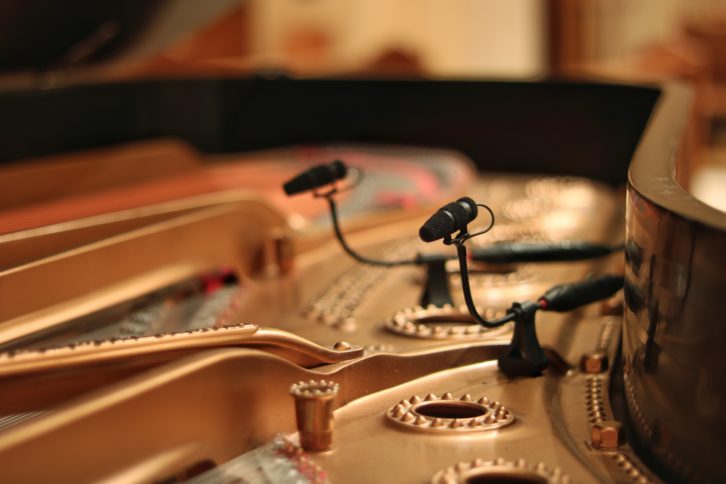 I can imagine. You probably felt all those twists and turns a little later, too.
I can imagine. You probably felt all those twists and turns a little later, too.
When you’re in a building that’s 100 years old and it’s gone through multiple renovations, it’s a puzzle. It’s a constant challenge to figure out how are we going to get this cable from some utility closet through four brick walls and up and through an old attic space that’s been renovated. Most of the time spent on the project is just spent trying to get cables going places that you didn’t know were possible. Hanging the speakers and all that actually is pretty quick. It’s the cable runs that are the challenge.
It would seem that the flexibility of the Dante network was essential for them to have this degree of control.
That was a big reason for going with fully digital architecture is that if you can get a Cat-5 cable there then you’re good. In the analog days you had to run all these snakes and have wires running everywhere. There’s no way we could have done that on this job. They had an amount of Cat-5 cables that had been run for other IT-related activities and were open for use. We also ran a couple of fresh runs here and there. But with everything running on the Dante digital network, if you can just get a Cat-5 cable there then you’re good. You can do everything you need to do. That’s incredible for jobs like this, and of course the sonic benefits of just having it all be digital. The moment the microphone signal hits the preamp until the moment it gets converted into power for the speaker it remains digital throughout the entire network.



